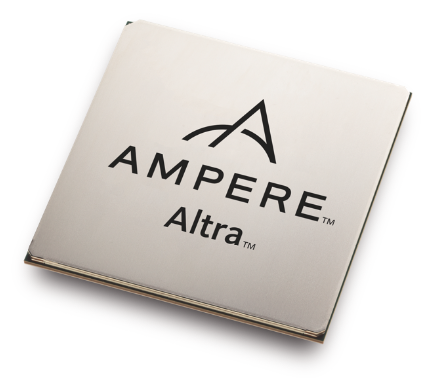Microsoft Azure Adds Ampere Arm-based Virtual Machines

Image credit: Shutterstock
Further evidence of the blossoming diversity of architectures offered in the cloud arrived this week with the news that Ampere Altra Arm-based processors have been added to Microsoft’s Azure infrastructure.
Microsoft says the Arm-based instances, currently in preview, offer up to 50 percent better price-performance than comparable x86-based virtual machines (VMs) for scale-out workloads.
“The new VMs are engineered to efficiently run scale-out workloads, web servers, application servers, open-source databases, cloud-native as well as rich .NET applications, Java applications, gaming servers, media servers, and more,” wrote Microsoft’s Paul Nash (Head of Product, Azure Compute Platform), in an April 4 blog post.
 The Arm CPUs are served up as general-purpose (Dps v5 and Dpds v5) VMs and memory-optimized (Eps v5 and Epds v5) VMs. They are powered by the Ampere Altra Arm-based processor, running at up to 3.0GHz. Each VM includes up to 64 virtual CPUs with 2GiB, 4GiB, and 8GiB per vCPU memory configurations, up to 40 Gbps networking, and optional high-performance local SSD storage.
The Arm CPUs are served up as general-purpose (Dps v5 and Dpds v5) VMs and memory-optimized (Eps v5 and Epds v5) VMs. They are powered by the Ampere Altra Arm-based processor, running at up to 3.0GHz. Each VM includes up to 64 virtual CPUs with 2GiB, 4GiB, and 8GiB per vCPU memory configurations, up to 40 Gbps networking, and optional high-performance local SSD storage.
Ampere’s Altra line is based on Arm’s N1 Neoverse core with up to 80 cores per chip (up to 128-cores on Altra Max).

Support for a wide array of operating systems is planned. Preview customers can select from Canonical Ubuntu Linux, CentOS, and Windows 11 Professional and Enterprise Edition on Arm, and Microsoft said it will be adding support for Red Hat Enterprise Linux, SUSE Linux Enterprise Server, Debian, AlmaLinux, and Flatcar.
“We have seen rapid growth in the adoption of our Ampere Cloud Native Processors, and this further expands their global scale and availability,” stated Jeff Wittich, chief product officer, Ampere.
“As of today, more than 120 applications, tools, languages, and databases are actively running on the Ampere-based Azure VM series,” wrote Wittich in a separate blog post. “This comprehensive set of software is tested and regressed daily to provide additional confidence to the developer community. We encourage everyone to utilize this site and watch for new and exciting software developments on Azure VMs soon, as well as opportunities to contribute.”
Preview access debuts in West US 2, West Central US, and West Europe Azure regions. At the high-end configurations, a 64-core “D64pds v5” (with 2,400 GiB of temporary storage) costs $2.893/hour, while a 32-core E32pds v5 (with 1,200 GiB of temporary storage) costs $1.843/hour. Spot pricing promises savings of up to 60 percent off the list price.
Microsoft is not the first cloud provider to offer Ampere Altra Arm CPUs. Last year, Oracle launched Altra-based Arm instances (OCI Ampere A1 Compute), offering flexible VM sizing from 1-to-80 CPUs and 1-to-64 GB of memory per core or as a bare-metal service with 160 cores and 1 TB of memory. A number of Chinese hyperscalers (Alibaba, Tencent, ByteDance) have also implemented Ampere Altra Arm CPUs.
An ever expanding menu of cloud-based processors and accelerators gives customers the ability to deploy – and try out – a variety of computing devices without making a capital investment. In the case of custom processors – most notably TPUs from Google and Arm-based Graviton chips from AWS – the cloud increasingly offers architectures not found through other channels. Even novel AI silicon companies like Cerebras Systems and Graphcore now offer cloud-based computing access for their systems (in partnership with Cirrascale Cloud Services).
Related
With over a decade’s experience covering the HPC space, Tiffany Trader is one of the preeminent voices reporting on advanced scale computing today.










